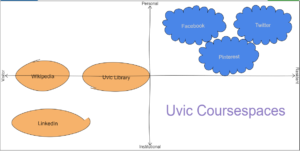Now that I have enough knowledge on how Personal and Professional Learning Networks work, the next thing that I need to do is to promote it. If I could extend my network to other individuals who has the same intention as me, which is to grow his/her network while learning something every day, then they could also benefit from my PLN. Also, it would not be considered an effective PLN if I am the only one benefitting from my PLN and I would not let others benefit from it as well. One of my learnings from EDCI 338 is that modern pedagogy is no longer a kind of education where teachers talk and then the students listen. In modern education, students can also share their knowledge with their fellow learners and this means that the source of information in the classroom is no longer “monopolized” by the teachers. In taking the challenge of promoting my PLN, I will practice good leadership and create partnerships.
Practicing good leadership is essential in promoting my PLN so that I could motivate my PLN members to work toward a common goal. As stated earlier, the goal of my PLN is to help my members grow their network and learn at the same time. In order to become a leader, I must first admit the fact that leadership is not about having legions of followers who will follow my orders (Qualman). Instead, leadership is about creating awareness and engagement as well as providing enough information to avoid confusion. Simply put, leadership is about serving and empowering others. Hence to become an effective leader, I should focus on empowering my PLN members through sharing the right information to them and encouraging them to create their own PLN.
In addition to good leadership, I should also look for opportunities to create partnerships. Just as the popular saying says, “No man is an island.” This means that people need each other in order to achieve a common goal. According to Qualman, a successful partnership is a kind of partnership among different people with different strengths. In this regard, before creating partnerships, it would be better for leaders to screen their prospective partners. This is to avoid creating a lot of partnerships that would not help improve the PLN. With regard to my personal preference for a partner, I would like to establish partnerships with groups or individuals who can point out what my PLN lacks. Having someone criticizing my PLN would help me think of better ways to make my PLN more engaging and interesting. On a last note, it would also be important to mention that creating partnerships in a highly digitized world is not that difficult anymore compared to when people needed yellow pages in order to get the contact details of different businesses and organizations.
To conclude, the purpose of PLN would be defeated if it is not shared to other users or interested learners. I believe that if the PLN is composed of the same people for a significantly long time, these members will not be exposed to other people with different perspectives. Thus, I believe that PLN should be organic. This means that it should be growing and changing based on the members’ needs. If it remained stagnant that means that PLN is nothing but comparable to traditional system of education. In my case, even if the focus of my PLN is to discuss topics in economics, I believe that I should not limit my network to people who specializes on economics. I believe that my PLN should cater others who are just interested to learn about economics regardless of their profession or specialization at school.
Work Cited
Qualman, Erik. “Empower Others.” Digital Leader: 5 Simple Keys to Success and Influence, McGraw Hill Professional, 2012.
